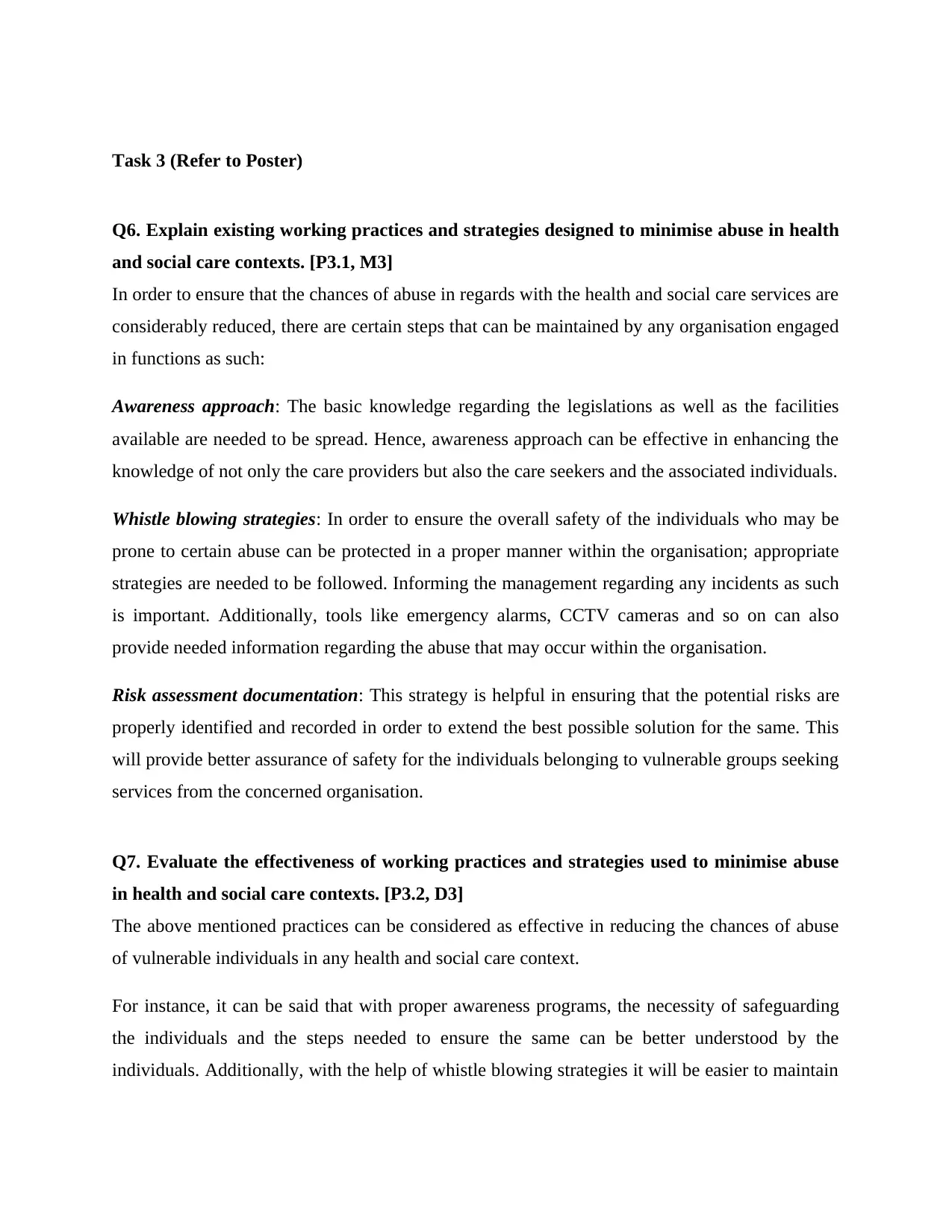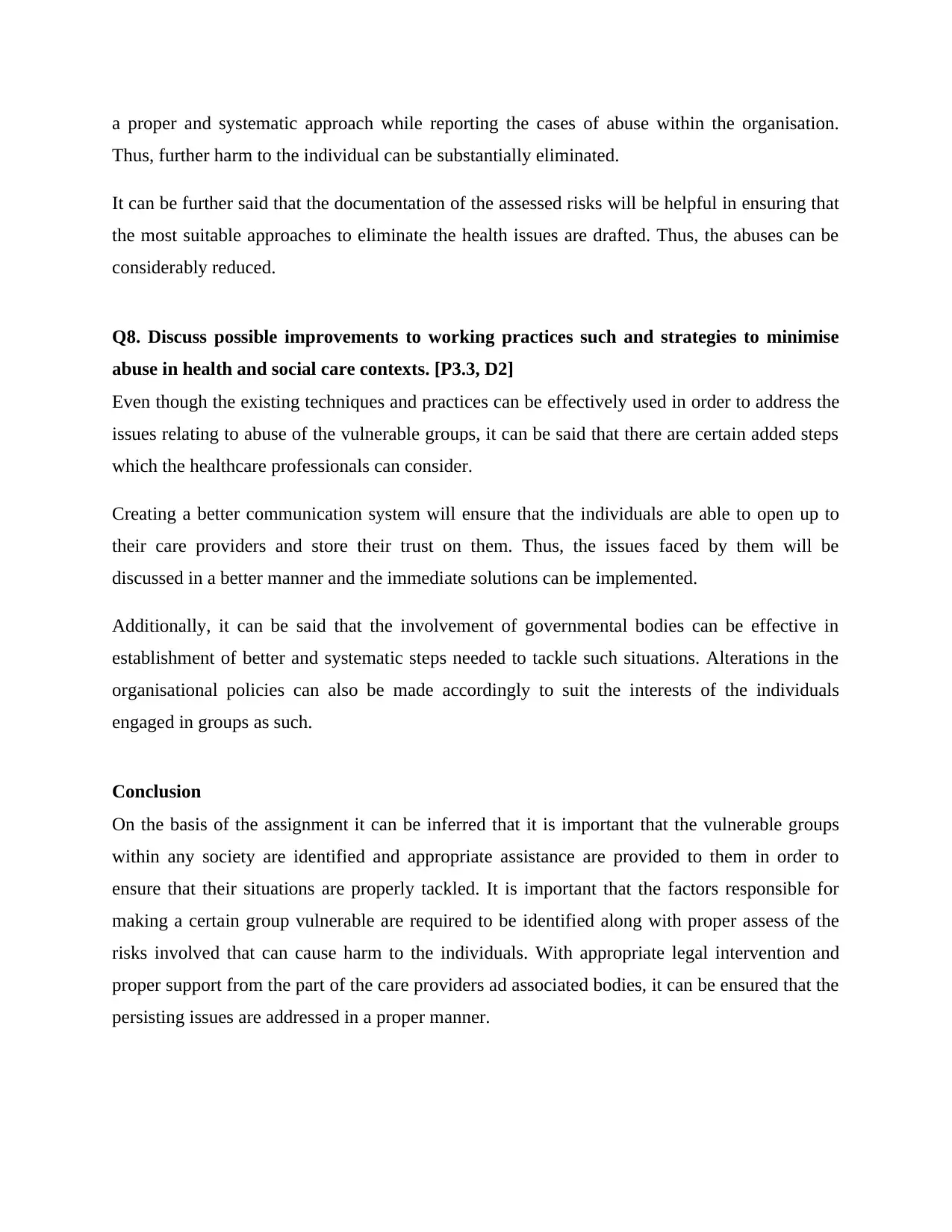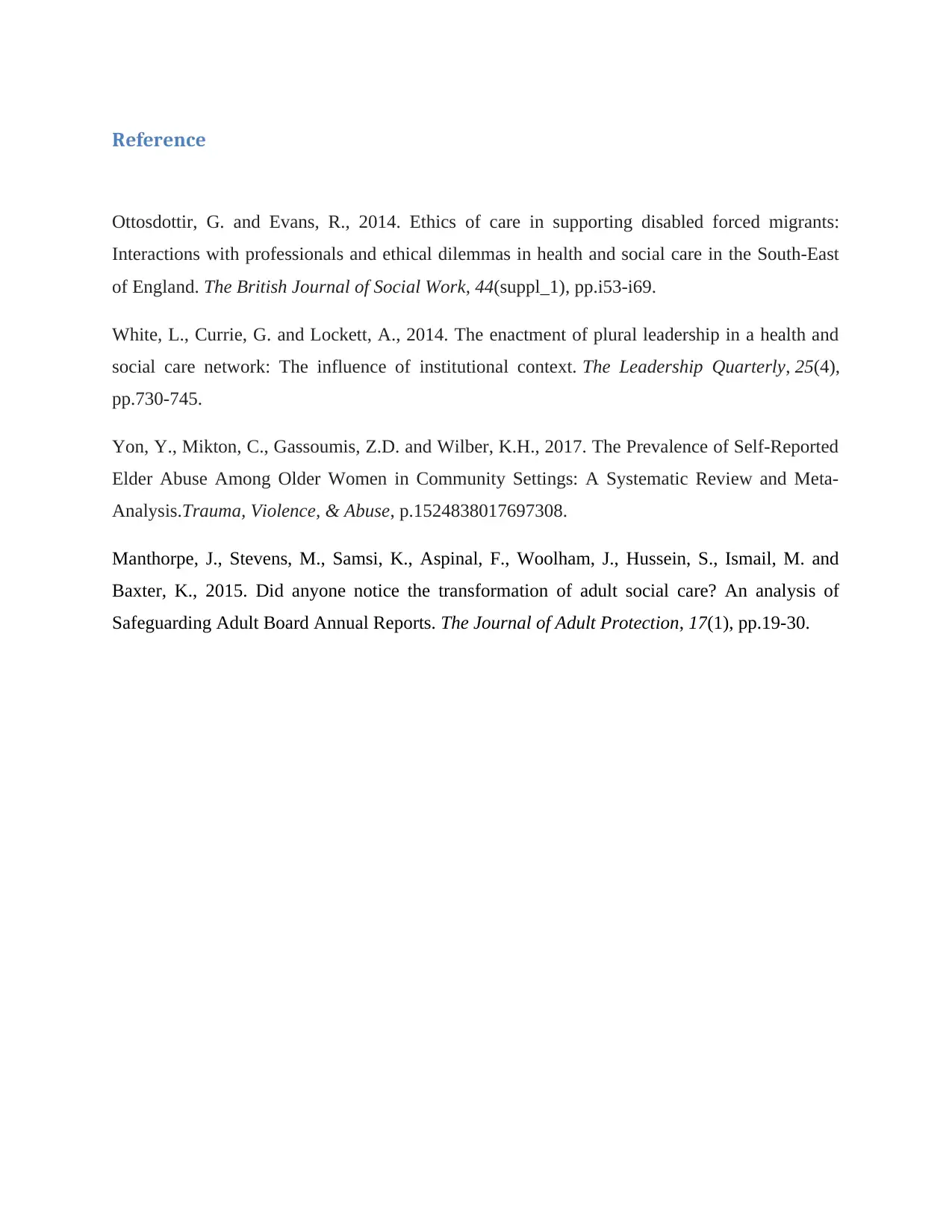Health and Social Care: Minimising Abuse in Healthcare Contexts Report
VerifiedAdded on 2020/03/16
|3
|898
|41
Report
AI Summary
This report addresses the critical issue of minimizing abuse within health and social care contexts. It outlines existing working practices and strategies, including awareness approaches, whistleblowing mechanisms, and risk assessment documentation, designed to protect vulnerable individuals. The report evaluates the effectiveness of these strategies, emphasizing the importance of awareness programs, systematic reporting, and proactive risk management. Furthermore, it discusses potential improvements, such as enhanced communication systems and increased governmental involvement, to create a safer environment for care recipients. The conclusion underscores the necessity of identifying vulnerable groups, assessing associated risks, and implementing legal and supportive measures to effectively address and prevent abuse in health and social care settings. The report references several academic sources to support its findings.
1 out of 3










![[object Object]](/_next/static/media/star-bottom.7253800d.svg)